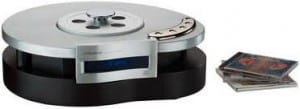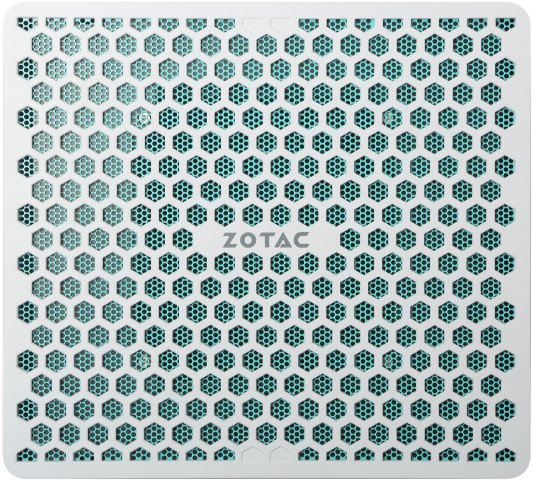Build and design
I first came across this CDP whilst auditioning a set of speakers a few years back. The dealer had a CDP3.1 sitting on the equipment table next to a particularly tasty Horning Sati SET valve amp.
The first thing that strikes you about the player is just how misleading its name is…there’s nothing “mini” about it! In fact it’s one of the largest CDPs I’ve so far encountered, but boy is it beautiful. I remember thinking at the time that I’d be quite happy to pay the asking price and never play it, just keep it on a pedestal as a work of art!
Closer inspection reveals just how well screwed together this player is too. Forget any preconceptions you might have about all Chinese kit being built down to a price, Opera Consonance are fast gaining a reputation for top quality build, and it’s easy to see why. This rivals just about anything for external build quality on the market today. When I first took arrival of the player featured in this review, it wasn’t just the physical bulk that was immediate, but the weight! Its no lightweight and tips the scales at a hefty 28KG!
Its a top loading design, so loading it as a bit like the vinyl ritual of carefully handling the album and positioning it over the central spindle once you’ve removed (the not insubstantial) top cover and magnetic puck. It’s refreshing to see such attention to detail, nice touches like the frosted Acrylic underside to the main top cover, presumably to avoid accidentally scratching anything the top cover is rested on? Round the back lie the power input socket, SPDIF digital output and input RCA sockets and analogue outputs. The player can be used as a stand alone transport or DAC, making it quite flexible providing you can live with just the SPDIF RCA connections. There’s also a switch to switch player modes (presumably between transport/DAC functions).
Under the hood, the player uses a quad of the venerable old Phillips TDA 1543 16-bit chips, and as I later discovered, is none the worst for it. The manual describes it as a linear (ie non over-sampling with only gentle output filtering, user switchable between 44.1/88.2 and 176.4KHz). Whilst some audio purists might turn their noses up and shy away from anything that doesn’t support the full over-sampling and filtering approach, they are making a big mistake, as some of the finest sounding players share this configuration. I don’t know why, but well executed linear players always seem to sound more musical to my ears, the Droplet being no exception.
The output stage is handled by a single ECC88 valve, so the player needs a few minutes (the manual recommends 30 but I’ve found 5 or 10 minutes sufficient). The change from SS to valve for the output I understand was in response to the reaction of some dealers and the public to the early run of CDP3.1’s, so Opera Consonance listened (always a good trait) and revised the internal layout accordingly. Controls are deliberately kept simple which is a good thing in my book. Just a few buttons on the top and a hand held (substantially made) remote for track selection and switching filtering between NoS and the double upsampling on offer.
Sound Quality
After leaving the player to warm up and spinning one of the better recorded discs in my collection (also reviewed here on Hifi Pig)…Eric Bibb “Spirit & the Blues” the first thing that struck me was the immediacy of the sound. The soundstage was very full with a slightly pronounced upper bass and mid range. I was afraid that background noise from the output valve might be apparent, but it wasn’t. As the disc spun on, I was drawn into the performance with a palpable “real presence” from the music.
This is a player that really engages with the emotions and allows you to forget the kit, and that in my book is a good thing. Detail is excellent albeit with a very slight rolling off at the extreme upper frequencies but none the worse for it. As the volume is cranked up and the louder recorded passages come through, there’s absolutely no sense of compression and this makes for an extremely non-fatiguing listen.
Unlike some reviews I’ve read on this player which described the bass as a bit underwhelming, well I don’t know what ‘speakers they were using but you could not describe the bass as anything but full, deep and taut. It really does plumb the depths which helps bring architecture to the music adding to the sense of presence and realism like few others I’ve listened to, but it never overwhelms. The more I listened, the more beguiled I was by how fluid everything sounded, a bit like listening to a well recorded vinyl LP but with greater dynamic range and without any obviously annoying signs of colouration.
Sound staging was particularly impressive and almost (to coin a tired phrase) holographic in most cases. This is one area that marks it out against many players I’ve listened to. At one point after going through half a dozen players in a few years I had relegated my CD collection to gather dust as I grew tired of the 2 dimensional and fatiguing sound that many big named players pass off as “hifi”. Whilst they might “measure” well, if they don’t sound good, engaging and non-fatiguing then “measuring well” isn’t worth a damn. Whilst not the last word in transparency, the Mini Droplet comes mighty close.
Its not just a one trick pony though, load up anything from rock to classical and its the same. Open, engaging, fluid with a great sense of timing and attack, and if the bass is in the recording, it’ll be presented in a very tuneful and realistic manner. The player was compared with a number of other CDPs including the Musical Fidelity X-Ray V8 and A5 players and a number of high end DAC’s to see if any obvious weaknesses could be wrung out of it, but it never failed to impress and was quite obviously in another league to the MF players. The differences in each case were subtle, but added together and as a whole, significant. More open, fluid and engaging with just about all musical Genres and most importantly, more believable in terms of musical presentation.
Was I impressed? Well my first audition and review was enough to convince me and I bought one. It has remained as part of my personal reference system for a year now and I can’t think of anything else I’d rather have sat in the kit rack. If you haven’t yet been beguiled by this player then I suggest that you owe it to yourself to at least go and listen to one.
Review System:
Lumley reference PP40/ST40 passive pre/power amplifier;
Horning Agathon Ultimate loudspeakers.
Manufacturer: Opera Consonance
Technical Specifications
DAC resolution TDA1543
0dBFS signal output: 2.5V RMS
Output Terminals: Gold plated Tube RCA unbalanced
Frequency response: Less than +/- 0.5 dB deviation 20Hz-15kHz FS:44.1KHz
Less than +/- 0.5 dB deviation 20Hz-20kHz FS:88.2KHz
Less than +/- 0.5 dB deviation 20Hz-20kHz FS:176.4KHz
Signal-to-noise ratio More than 100dB
Distortion (RCA) Less than 0.21 % 1KHz FS:44.1KHz
Less than 0.14 % 1KHz FS:88.2KHz
Less than 0.14 % 1KHz FS:176.4KHz
Remote Control Philips RC-5 compatible IR system 36kHz modulation frequency
Vacuum tube E88CC/6922 x1
Want to read more hifi reviews?






















































































































































































You must be logged in to leave a reply.